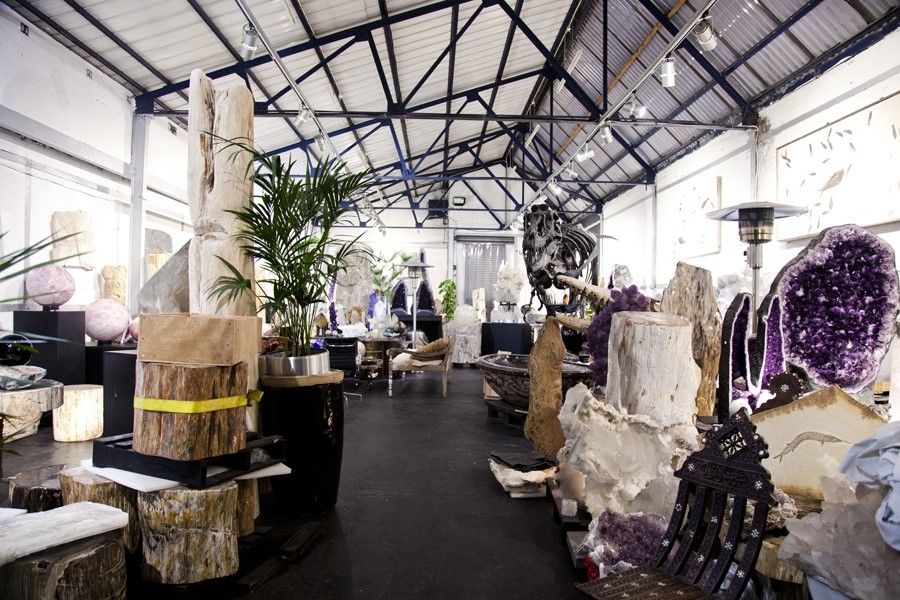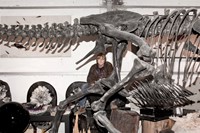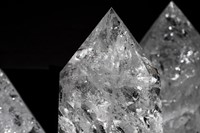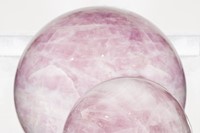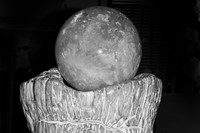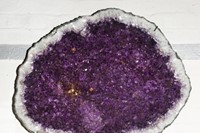An outstretched cave bear from the Romanian ice-age stands over a display of glittering quartz and violet amethyst clusters, while a 300-million year old German shark loiters beside a fossilized Jurassic Crocodile from Khouribga, Morocco...
An outstretched cave bear from the Romanian ice-age stands over a display of glittering quartz and violet amethyst clusters, while a 300-million-year-old German shark loiters beside a fossilized Jurassic Crocodile from Khouribga, Morocco. Welcome to Dale Roger’s Ammonite shop, an incredible treasure chest of fossils, crystals and minerals from across the world. A modern-day Indiana Jones, Rogers has been sourcing and collecting for over 25 years, growing from a 50cm stall on Portobello road to a grand shop in Pimlico and two over-flowing private warehouses. Supplying everyone from artists and academics, to rock stars and interior designers, the self-taught Rogers has built a world-class collection that tells a story of beauty and archaeology and also the staggering journey from the depths of a quarry in Indonesia to a window display in West London. AnOther spoke with Rogers about the glittering and dangerous world of fossil collecting.
When did you start collecting?
I started 25 years ago in Morocco. I just fell into it really, and I knew zero. I knew zero about paleontology, geology, I just educated myself.
How did you educate yourself?
Trial and error. I researched. I spoke to any geologist I could find. Books, libraries, perseverance. My background probably helps, I was brought up in a nightclub, so I got to know human nature from an early age. After that I had all sorts of jobs – I spent four years on a demolition site, meeting travellers and gypsies which gives you an even bigger insight into human nature. So by the time I was in Morocco, even though I didn’t know the Moroccan culture, I was pretty street wise, geared up. I wasn’t intimated. It was hard work. Really hard work. Language barriers are tricky. Even when you have somebody translating for you, there are all these technical terms that you need to put across.
Do you physically go down the quarries yourself?
I physically go to the quarries myself. Well I used to, I generally don’t have so much time these days, but back at the beginning I was a bit more gung-ho. More fit and you feel invincible at that age. I didn’t give a shit I suppose, nothing to lose. I used to have time to hang out with all the quarrymen, have a beer, go out in wild towns. Now I don’t have the time. I try and make the time. I try and put at least two trips a year in.
"Back at the beginning I was a bit more gung-ho...you feel invincible at that age. I didn’t give a shit I suppose, nothing to lose. I used to have time to hang out with all the quarrymen, have a beer, go out in wild towns"
How do you transport the fossils back to London?
We take them back in containers and lorries, but even in a third world country, that costs money. When I first started I was on such a minute budget. I had enough to get there and get the material out. I didn’t even care or even think about how I would get it home. I would store them in my back garden we would take them through the house with all my friends from the pub. Sometimes they was stuck abroad for months. I would come back home, work and raise a bit of money to get them back.
Have you ever been in danger?
A few times. I often think, “that was a bit close.” I have always flirted with danger a little bit. I know my limits, and you get to an age where you can’t run as fast as you used to. Afghanistan was a bit scary. And the politics of Afghanistan mean things are always changing. But the scale we get is phenomenal and it is worth the danger when you arrive home and open that crate.
Text by Mhairi Graham
